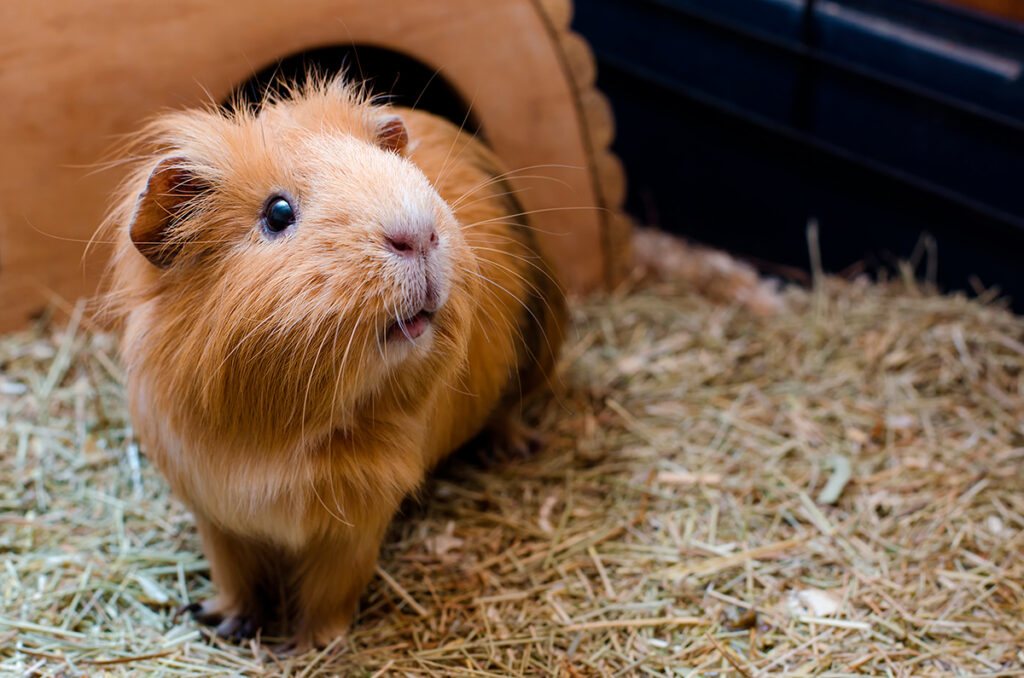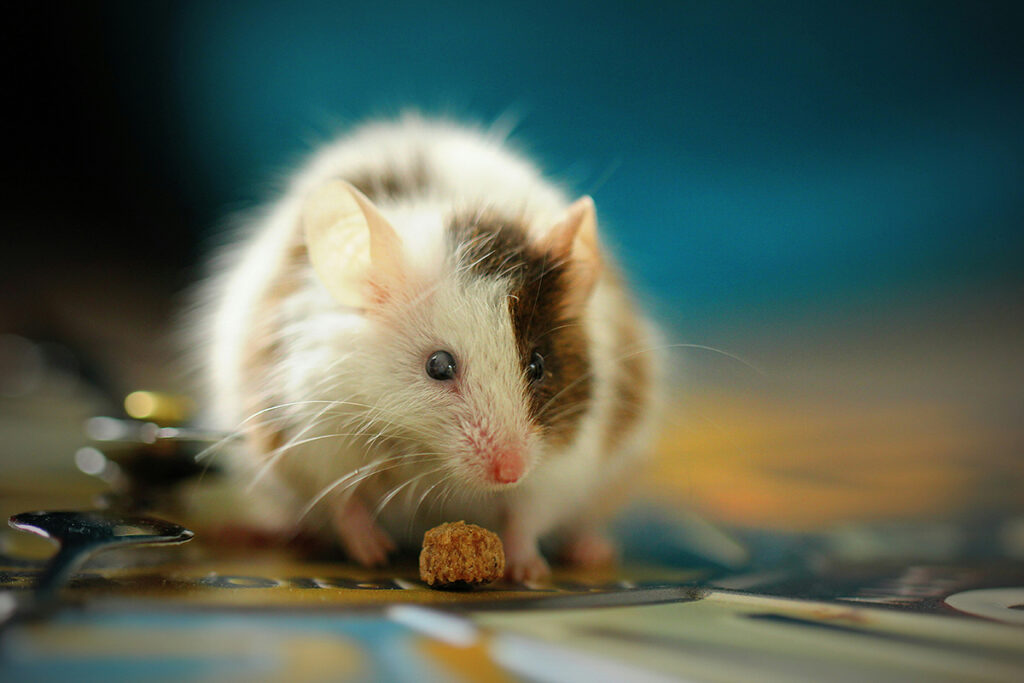Type I interferons (IFNs) are antiviral signaling molecules the body produces in response to viral infections. Delayed or reduced IFN-I production, as well as impaired interferon signaling, are associated with severe COVID-19. To prevent severe COVID-19, scientists have proposed the use of interferon preparations. However, IFN-I was only beneficial when administered early and in later stages of infection was ineffective and even worsened the course of the disease. Therefore, the timing of the introduction of interferon preparations is crucial for the effective suppression of coronavirus.
French scientists have shown that nasal interferon-alpha is effective only before the onset of symptoms of coronavirus. The study was carried out on hamsters. Nasal interferon-alpha was used at a dosage of 100,000 IU. This dose is equivalent to the 6 million IU human dose used in clinical trials for hamsters.
Nasal Interferon-Alpha Stimulates The Expression of The Antiviral Gene Mx1
Mx1 is an interferon-stimulated gene. The expression level of Mx1 well shows the levels of IFN types I and III, acting locally.
After intranasal administration of 100,000 IU of IFN-alpha, Mx1 expression increased in hamsters’ turbinates, lungs, and spleen. With the introduction of 700 thousand IU of IFN-alpha, the expression of Mx1 in the lungs was similar.
At 48 hours after administration of 100 thousand IU IFN-alpha, pulmonary expression of Mx1 decreased compared to 24 hours after administration but remained elevated compared to placebo treatment.
In the lungs of hamsters, interferon-stimulated expression of the Mx1 protein in the primary target cells of the coronavirus are pneumocytes, bronchiolar, and bronchial epithelial cells, as well as in endothelial and immune cells in the lung parenchyma.
The percentage of cells expressing Mx1 increased significantly 24 hours after administration of 100,000 IU IFN-alpha and further expanded in hamsters treated with 700,000 IU IFN-alpha. Mx1 protein levels remained elevated for 48 hours after intranasal administration of IFN-alpha.
Prophylactic and early administration of nasal interferon-alpha protects against weight loss in SARS-CoV-2
High doses of the SARS-CoV-2 virus caused severe lung disease similar to human COVID-19 in hamsters. Three days after infection with coronavirus, the animals lost significant weight.
Administration of interferon after the onset of coronavirus symptoms did not protect hamsters from weight loss. However, when interferon-alpha was administered 16 hours before infection or 1 day after, it protected against weight loss.
Protection against weight loss with prophylactic and early administration of nasal interferon was not associated with a reduction in the level or duration of viral shedding since viral RNA levels were similar with preventive and early and late administration of interferon.
Interferon Reduces Viral Load in The Lungs
COVID-19 is associated with damage to the lower respiratory tract. When administered early, nasal interferon reduced viral RNA levels in the lungs on the 5th day after infection.
The hamsters developed pneumonia on the second day after being infected with the coronavirus, progressing to moderate to severe pneumonia with lung tissue thickening by the fifth day. Pneumonia resolved 15 days after infection. After the resolution of pneumonia, small lesions remained in the lungs with infiltrates of macrophages and neutrophils and fewer lymphocytes and plasma cells.
Early administration of nasal interferon reduced pulmonary pathology.
How Interferon Affects Viral RNA, Mx1, and Lymphocytes
On day 2, after infection with coronavirus, viral RNA was observed in bronchial and bronchiolar epithelial cells and in areas of inflammatory infiltrates. On day 5, viral RNA remained only in the area of inflammatory infiltrates.
Prophylactic and early administration of IFN-alpha did not significantly reduce viral RNA levels on days 2 and 5 post-challenge compared with placebo.
Mx1 protein levels were elevated in the lungs of infected hamsters, and the percentage of Mx1-positive lungs was similar between the placebo and interferon groups.
SARS-CoV-2 resulted in lymphocytopenia. Interferon did not affect the levels of lymphocytes.
How Interferon Affects The Immune Response to SARS-Cov-2
Coronavirus increased the activity of genes stimulated by interferon on the 2nd and 5th day after infection, regardless of the introduction of interferon. On the 5th day after infection, the expression levels of IFN-gamma mRNA and IL-10, and IL-6 significantly increased.
Compared to healthy hamsters, the lungs of infected hamsters had increased levels of interferon-gamma-stimulated protein CXCL10 and IL-10. Type I interferon did not affect the levels of these proteins.
Compared with placebo, interferon reduced lung levels of the pro-inflammatory cytokine IL-1β.
In contrast to the prophylactic and early interferon group, the levels of pro-inflammatory cytokines IL-6, TNF-α, and the chemokine CCL2, which attracts immune cells to inflammatory foci, were increased in the late interferon group.
Conclusions
Nasal interferon-alpha is effective when administered prophylactically or one day after infection with coronavirus. Prophylactic and early administration of IFN protected against weight loss and modestly reduced virus titers in the lungs.
Stimulating the antiviral innate immune response before infection or at the earliest stage of disease suppresses replication and reduces the symptoms of SARS-CoV-2. Nasal IFN-alpha on the first day after infection reduced the symptoms of coronavirus as effectively as prophylactic administration before infection.
However, the introduction of IFN-alpha after the onset of symptoms did not lead to clinical improvement.
Compared to humans, viral replication and lung disease progress much more rapidly in hamsters – in the lungs, the virus peaks on days 2-3, with the most severe symptoms on days 6-7. Therefore, treatment on the 3rd day after infection corresponds to the late administration of interferon.
In the late interferon group, the levels of IL-6, CCL2, and TNF-α increased. However, this did not lead to an increase in pathology compared to the placebo group, meaning that the lack of effect with late administration of IFN-alpha may not be because late IFN causes immune disorders but because SARS-CoV-2 expresses a wide range of signaling molecules that block type I IFN.
The coronavirus increased the expression of interferon-stimulated genes (ISGs) in the respiratory tract. Interferon administered 2 days after infection did not enhance ISG expression, meaning that ISG levels reached their maximum expression in response to endogenous production of type I and III IFN and could not be increased with exogenous interferon.
The timing of type I interferon treatment is critical for protection against severe COVID-19. Treatment with IFN-I may only be beneficial in patients with low viral load or mild symptoms in the early stages of the disease. However, in patients with COVID-19 requiring hospitalization, interferon is likely to be of no benefit.
Useful article, necessary information? Share it!
Someone will also find it useful and necessary:



